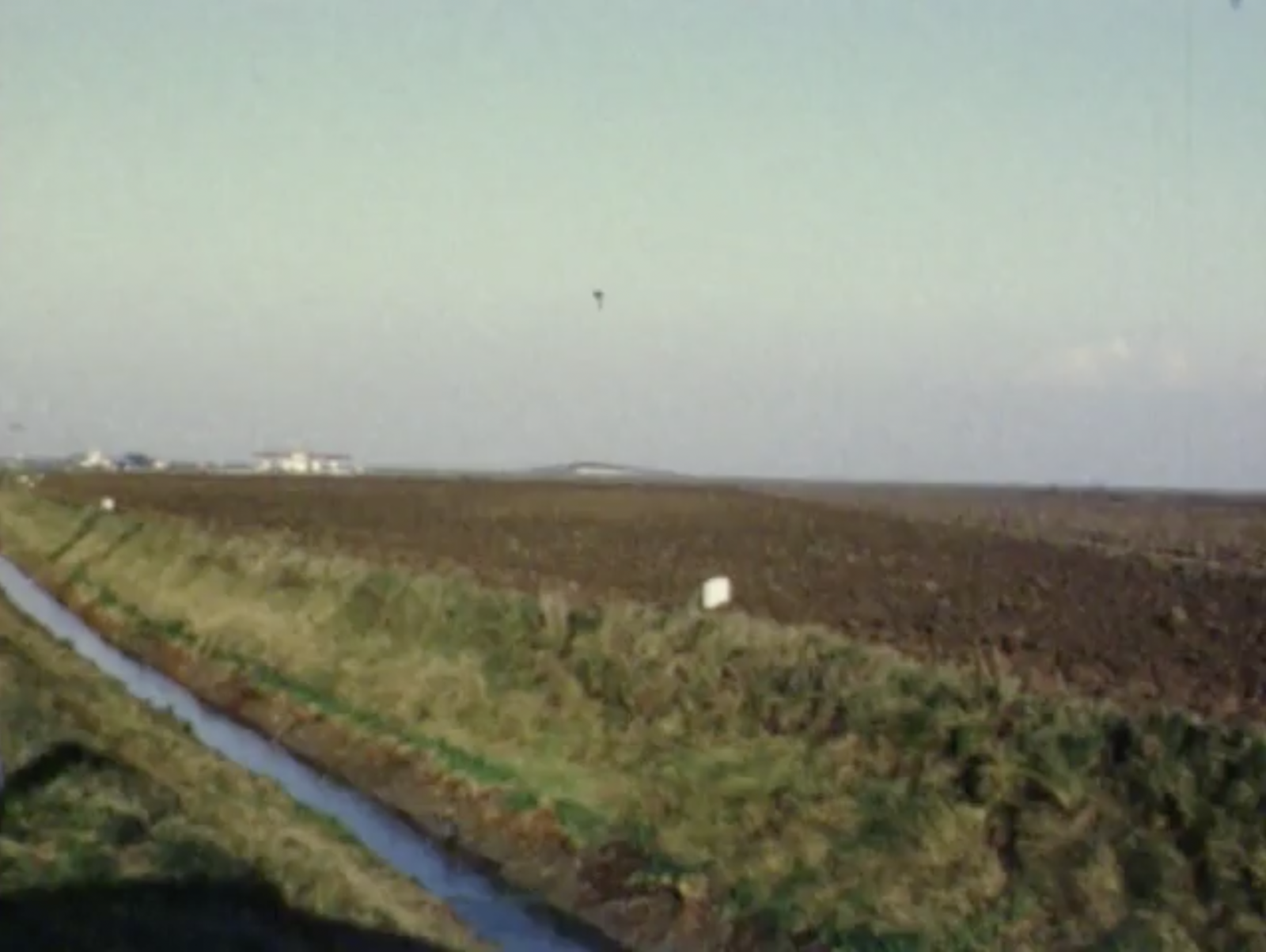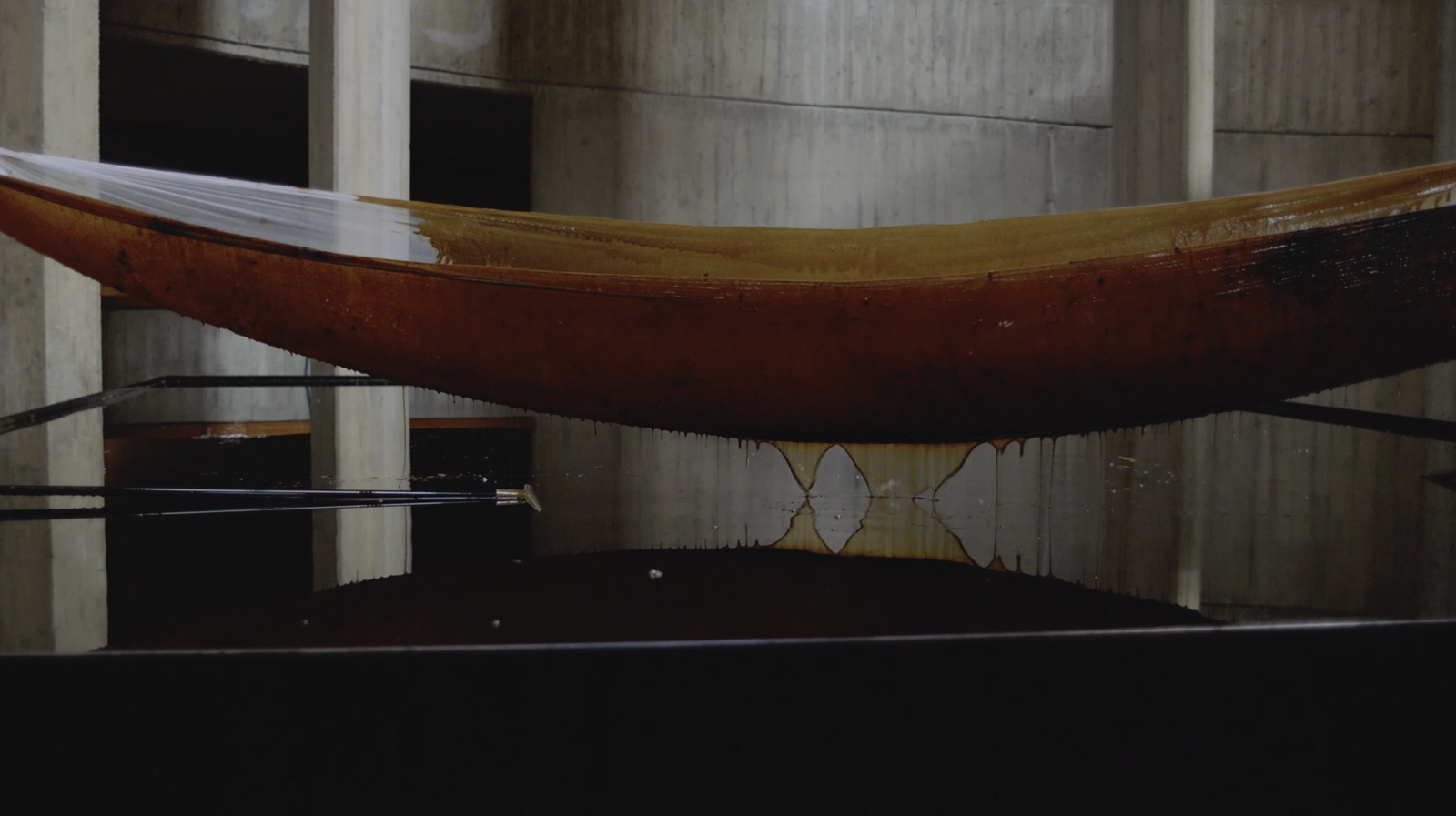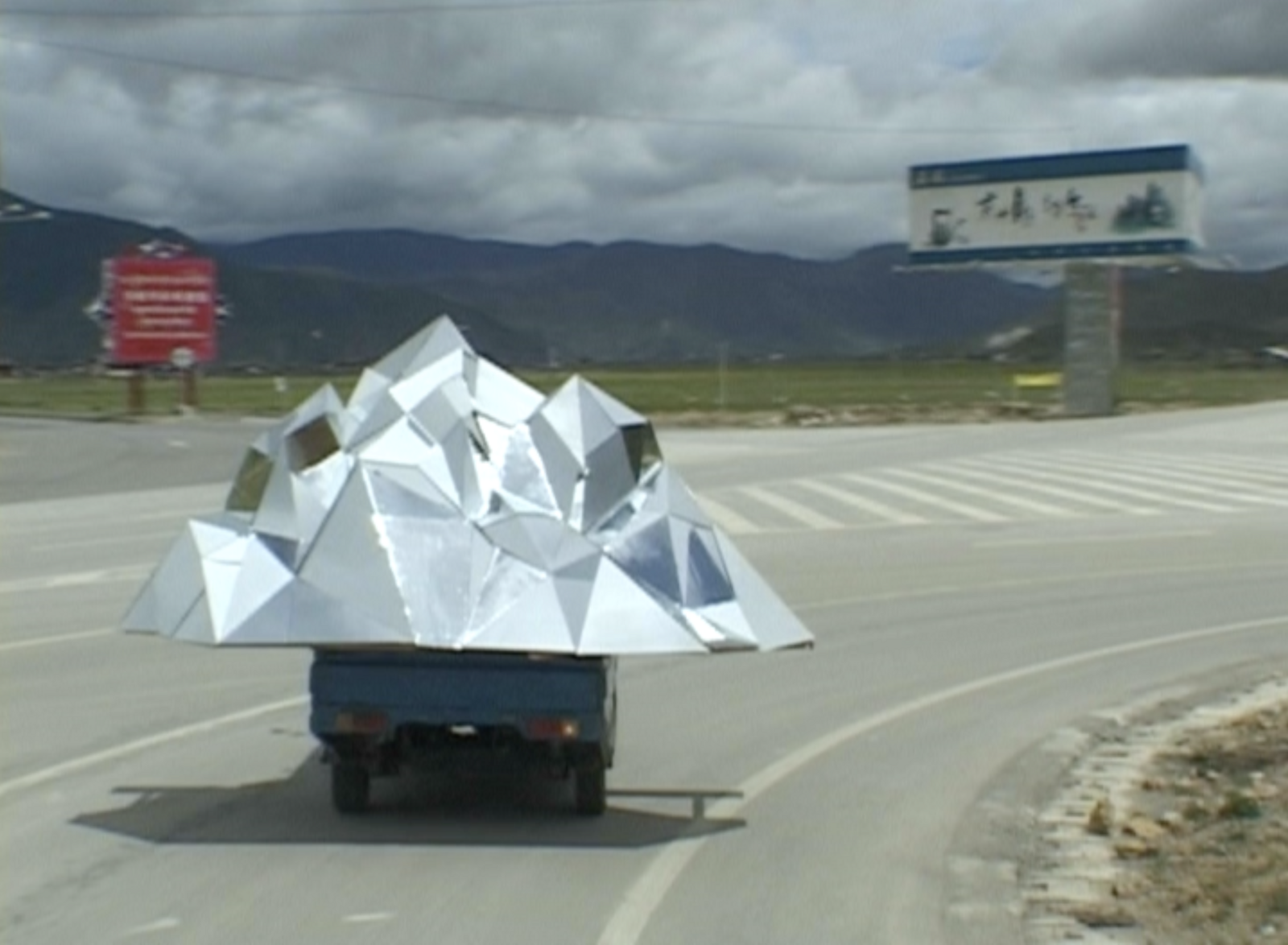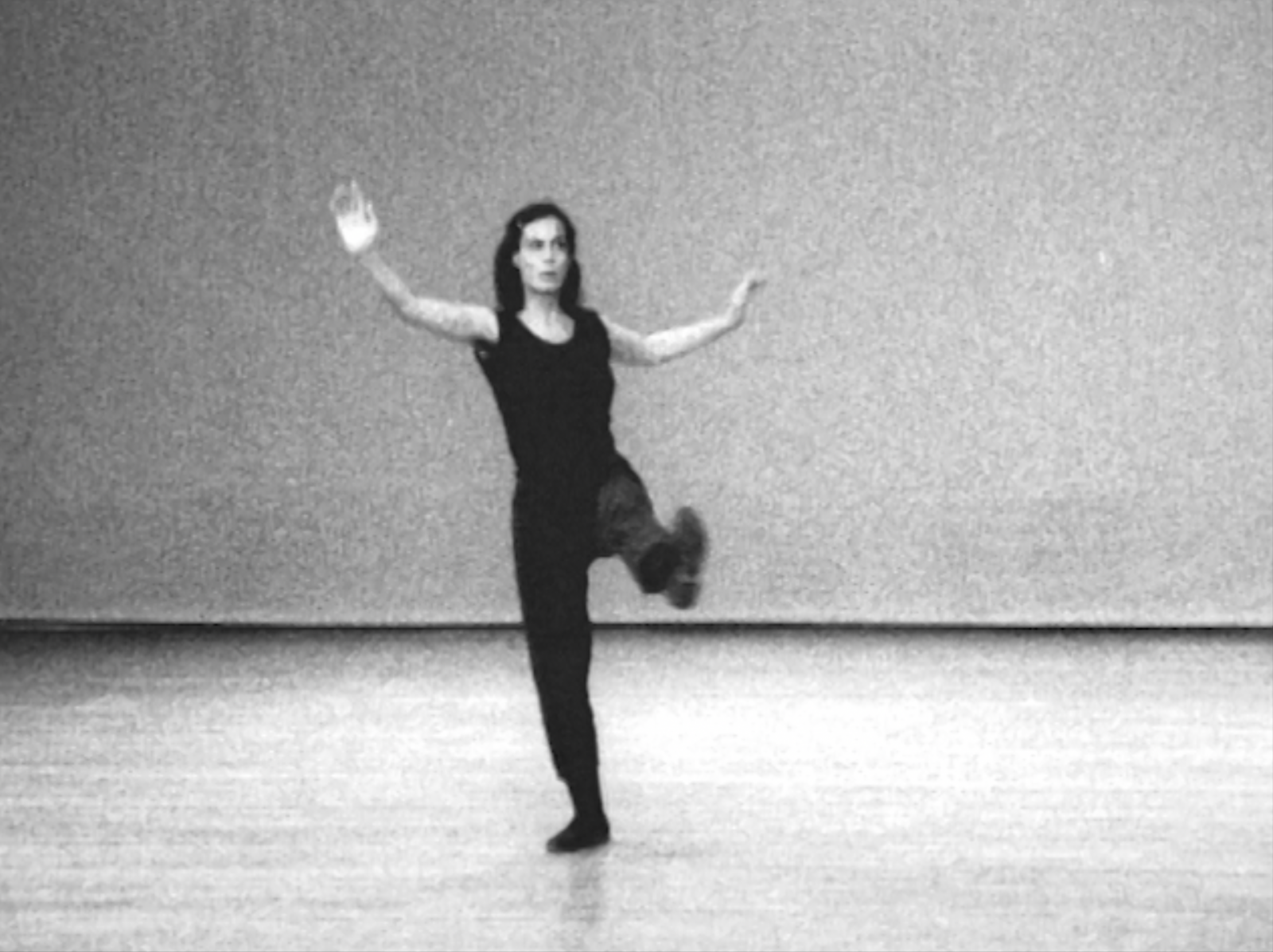Posenenske, Sabahi, Alÿs, Chang, Rainer
To mark the closing of Charlotte Posenenske's exhibition at CCA Berlin, we are making available a selection of five films and videos starting from 7–13 Mar 2022. The selection touches on questions of permanence and transience, participation and authorship, and materiality and form.
Charlotte Posenenske, Monotonie ist schön
Shirin Sabahi, Mouthful
Francis Alÿs, Paradox of Praxis 1 (Sometimes making something leads to nothing)
Patty Chang, Shangri-La
Yvonne Rainer, Trio A

Charlotte Posenenske, Monotonie ist schön [Monotony is Nice], film still, 1968, 13:22 min.
The film Monotonie ist schön (Monotony is Nice) consists of recordings of a trip through the Netherlands in the late 1960s, alternately filmed by Charlotte Posenenske, her first husband Paul Posenenske, the artist Peter Roehr, and the future gallery owner Paul Maenz. Filmed out of a moving car, the landscape appears monotonous, the repetitive succession of rivers, fields and trees only interrupted by electrical masts, bridges, and roads. The title of the film, Monotony is Nice, refers beyond the recordings as such, since monotony, regularity, and repetition are also the basic principles of Posenenske’s creative process.

Shirin Sabahi, Mouthful, 2018, Film still, 35:53 min.
In 1977, the Japanese sculptor Noriyuki Haraguchi was invited to install an iteration of his sculpture Matter and Mind—a rectangular steel basin filled with used engine oil—at the Tehran Museum of Contemporary Art (TMoCA). In Mouthful (2018), Haraguchi, upon the invitation of Shirin Sabahi, returns to TMoCA to supervise the restoration of his work. Unobtrusively documenting the process, and the subtle changes in the oil pool resulting from it, the film recounts the sculpture’s history and biography through sparse poolside conversations, rumors about the causes of its deterioration and the debris fished from it. Mouthful suggests how artistic research can engage with the work of another artist, all the while exploring the institutional and material history of a nation, and the internationalism that existed prior to current conditions of globalization.

Francis Alÿs, Sometimes Making Something Leads to Nothing, 1997, Film still, 4:59 min.
Paradox of Praxis 1 (1997) is the record of an action carried out under the rubric of “sometimes making something leads to nothing.” For more than nine hours, Francis Alÿs pushed a block of ice through the streets of Mexico City until it completely melted. And so for hour after hour he struggled with the quintessentially Minimal rectangular block until finally it was reduced to no more than an ice cube suitable for a whisky on the rocks, so small that he could casually kick it along the street.

Patty Chang, Shangri-La, 2005, Film still, 40:02 min.
Shangri-La (2005) by Patty Chang is a video installation documenting various attempts to recreate its fictional, eponymous subject, in the real-life Shangri-La, a town in China’s Yunnan province renamed in 2002 to attract tourism. By hiring local non-actors and using the existing economies to reproduce symbols such as the sacred snow mountain, the project reflects on the link between tourism, site specific artistic practices and documentary practices. These situations, shot in a hand-held and documentary fashion, are often rendered surrealist, as when one sees a mirror-faceted mountain being driven across the barren landscape.

Yvonne Rainer, Trio A, 1978, Film still, 10:30 min.
Yvonne Rainer choreographed Trio A in 1966 for The Mind is a Muscle, Part I at Judson Church; she performed the piece for the camera in 1978. Since its completion Trio A has undergone many incarnations. Written for a solo performer, it features a seamless flow of everyday movements like toe tapping, walking, and kneeling, without music or any other sound. Two primary characteristics of the dance are its unmodulated continuity and its imperative involving the gaze. Trio A positioned Rainer as a leader among the dancers, composers, and visual artists who were involved in the Judson Dance Theater (which she co-founded in 1962), that ushered in an era of contemporary dance through stripped-down choreography and casual and spontaneous performances.